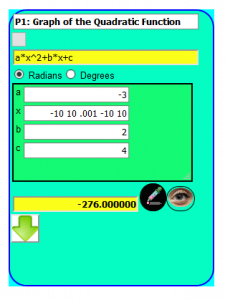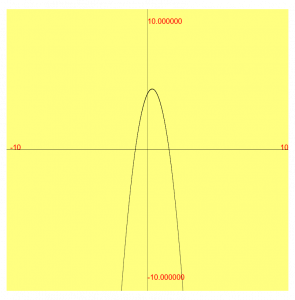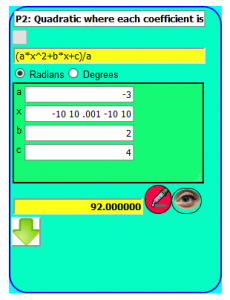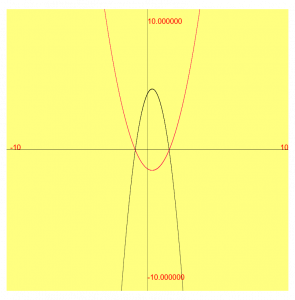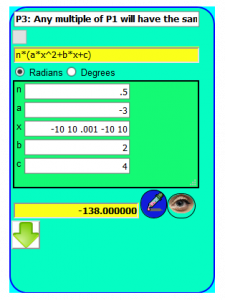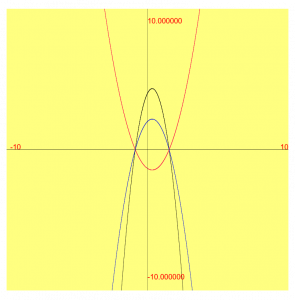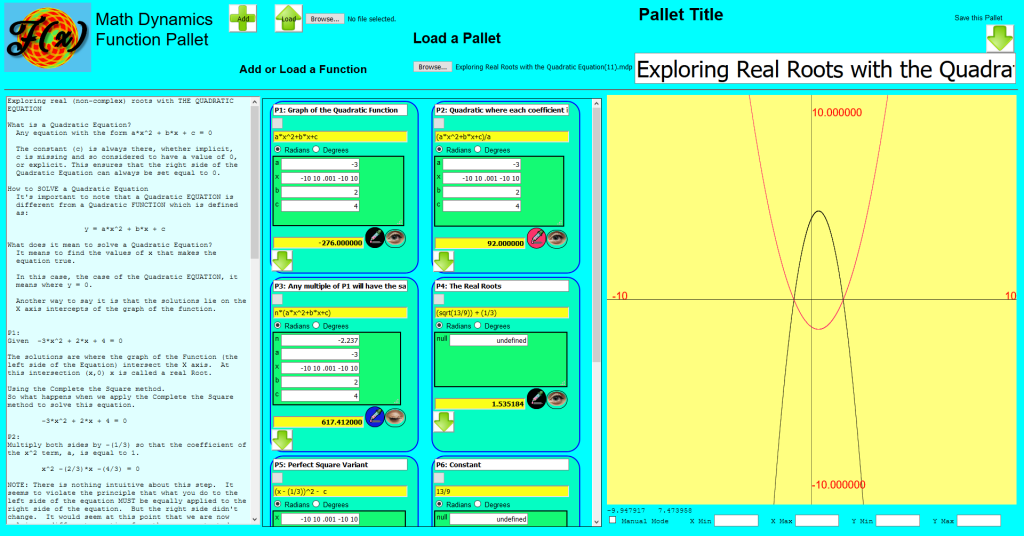Jaye at JamworksPro has been busy over the past few months polishing his Flagship Multivariate Algebraic Expression Based Graphing Calculator, Math Dynamics. It’s more than just a graphing calculator. It’s an entire Mathematics Management System.
Warrenton Oregon, Oct 28, 2021— From the JamworksPro R&D Department Comes Math Dynamics, the Online Arithmetic Machine (https://mathdynamics.net). Math Dynamics includes both an Android App as well as it’s Complementary Web App. At the core of Math Dynamics is the ability to write mathematical expressions using most nearly any string of alphanumeric characters as variables.
“Math doesnt have to be cryptic”
a*x^2 + b*x + c
can also be written as
ace*xray^2 + baker*xray + charlie
Math Dynamics keeps it simple with a straight forward approach to variables, constants and the operators used to form mathematical expressions.
If h is the height measured in feet, t is the number of seconds the object has fallen from an initial height h0 with an initial velocity or speed v0 (ft/sec), then the model for height of a falling object is:
h(t)=−16 * t^2 + v0 * t + h0
“Free Form Variable Names make more sense in the physical world”
height(elapsedTime) = -16 * elapsedTime^2 + initialVelocity * elapsedTime + initialHeight
Mathematical Expressions are packaged in Math Dynamics as Function Definition Cards. The Variables are listed in a table that allows their values to be edited. Any one of the variables can be used as an independent variable to plot the graph of the function. By entering start, end and increment values in that order will define that variable as independent and will plot a graph accordingly. Function Definition Cards can be named and saved as .xg2 files for portablility. These .xg2 files can be opened by both the Web App as well as the Android App.
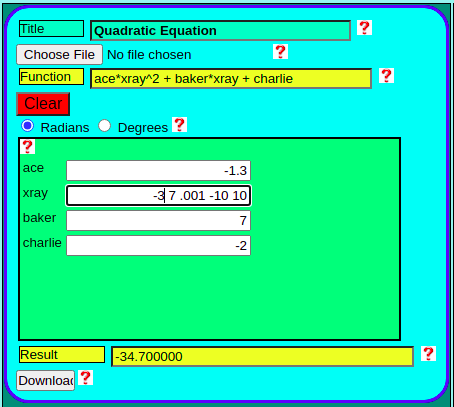
Collections of Function Cards are packaged in the Math Dynamics Pallet (https://mathdynamics.net/pallet.html). Both the Android App and the Web App have a Pallet. Function Definition Cards are easily added to or removed from the Pallet. The Pallet in the Android App supports Function Definition Cards that each have a self contained graph while the Pallet in the Web App supports a single graph on which any of the Function Definition Cards may use to plot its graph.
The Pallet in the Web App is very powerful. It supports plotting multiple functions on the same graph. Each plot can have a different color and each plot can also be hidden. Like Function Definition Cards, Pallets can be named and can be downloaded and saved for portability.
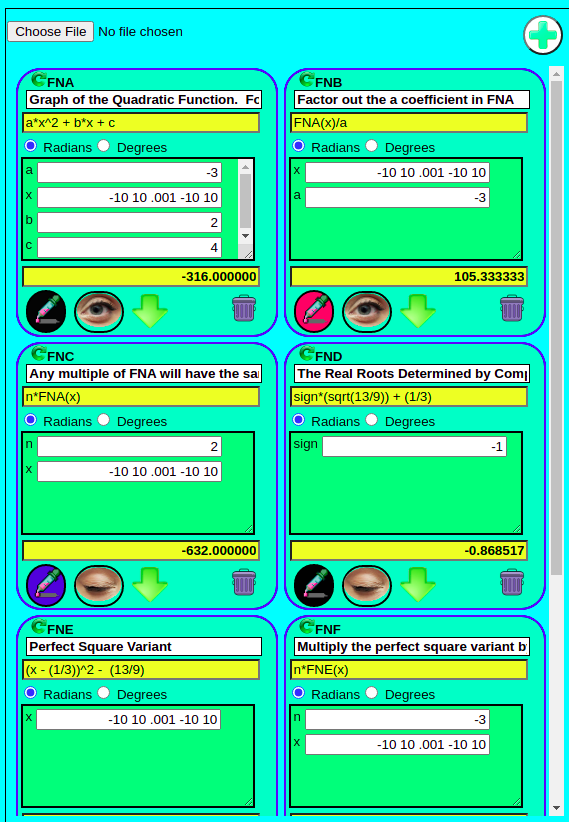
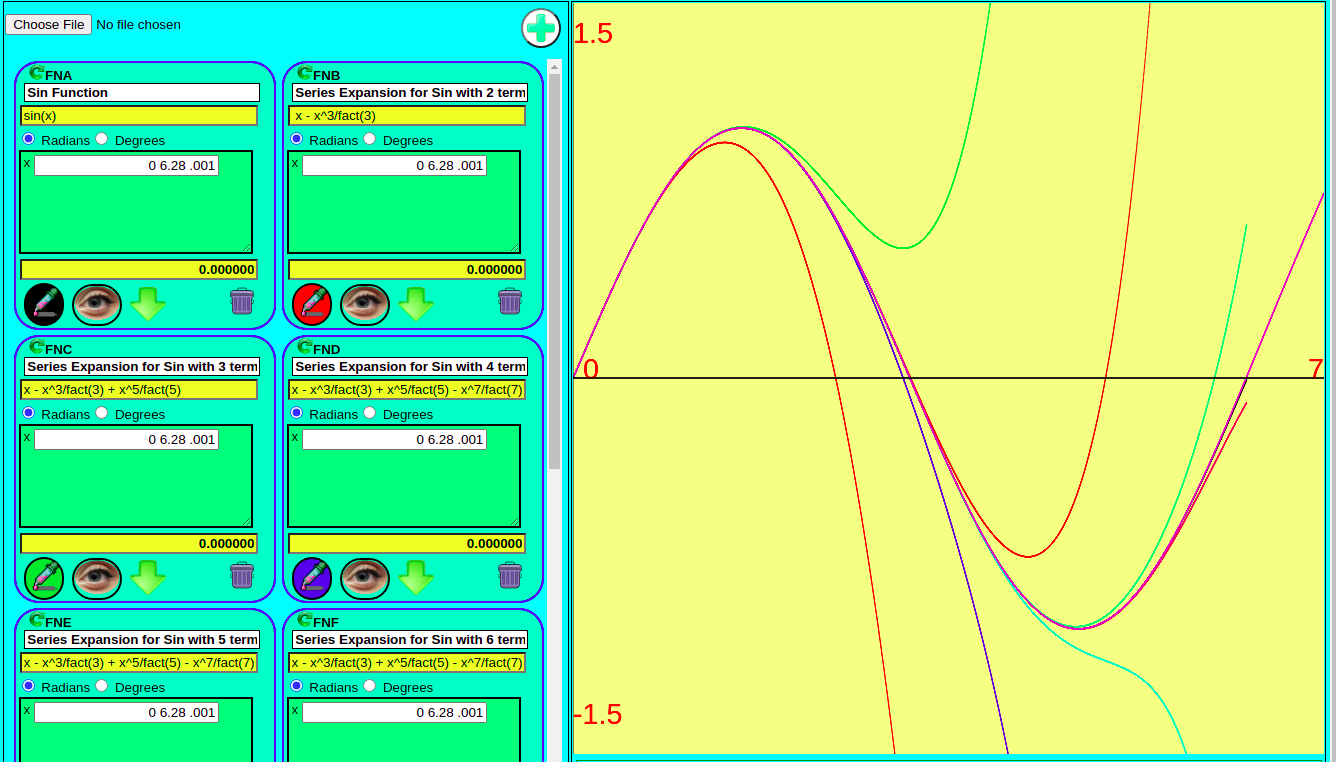
Each Function Definition Card in the Math Dynamics Web App Function Pallet is assigned its own three letter moniker. A Function moniker always begins with FN and the third letter is determined by the position of Function Definition Card in the Pallet. For example the first Function Definition Card will have the moniker FNA and the second, FNB. The Math Dynamics Web App Pallet supports 26 of these function monikers, FNA thru FNZ.
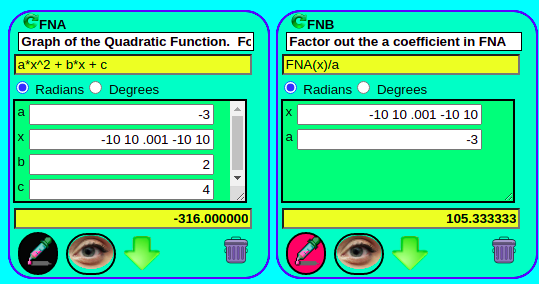
The Math Dynamics Web App Function Pallet is designed for training and research. The Web App contains an editor in the left panel that is used to write details and instructions about the Pallet, allowing entire tutorials to be created. Using the Pallet Download and Load features provides for great portability.
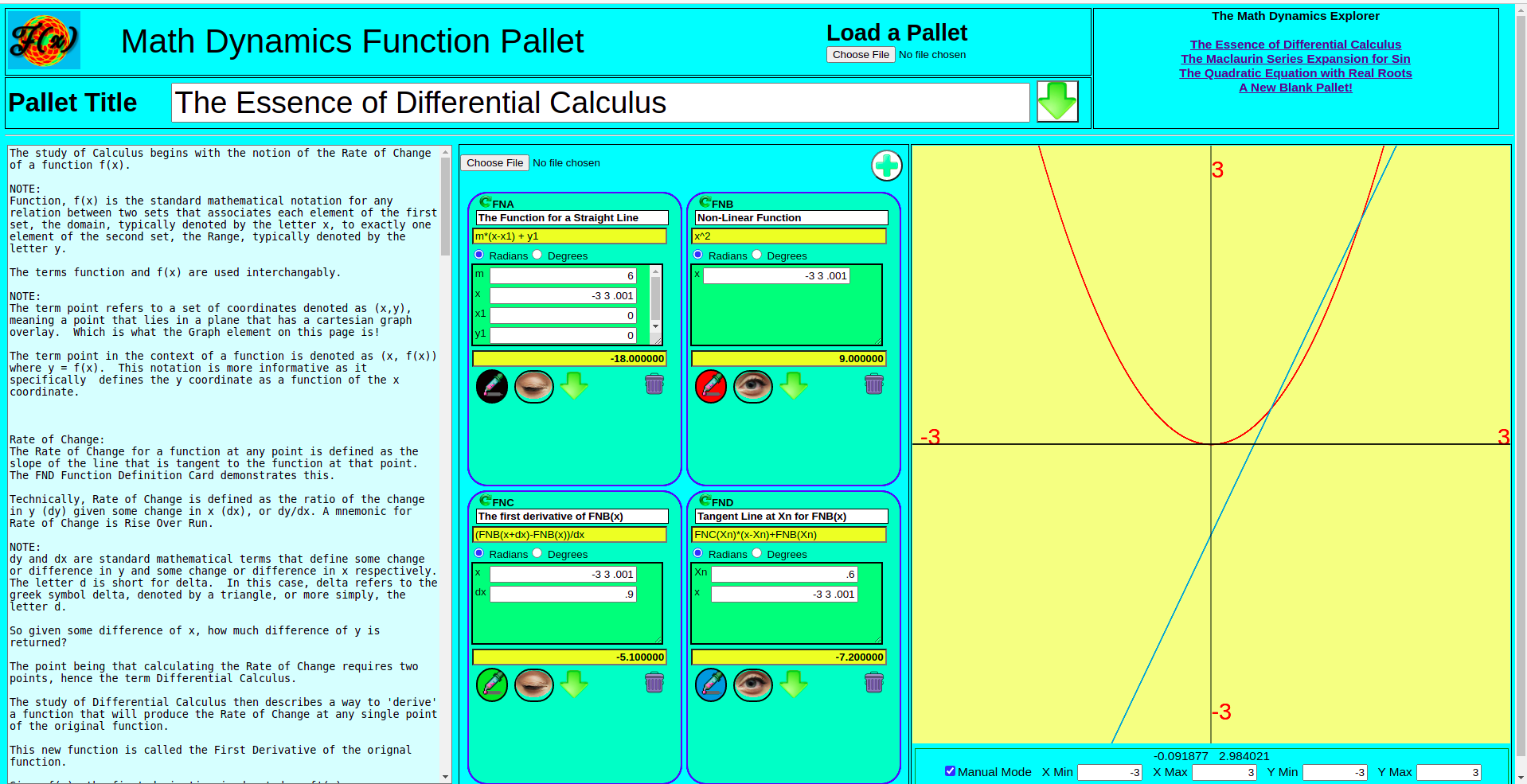
Jaye Mosier, owner of JamworksPro is an Independent Software Developer specializing in small business web development as well as android mobile app development. Complex back end data systems interfaced with simple and elegant GUI design is one of Jaye’s many specialties.
Jaye (https://jaye.jamworkspro.com) has published many software title over the years including FileNotes, TRAX, Coupon Cache and others as well as the most recent projects, Math Dynamics, Vibrology App and The Pothole Project.
